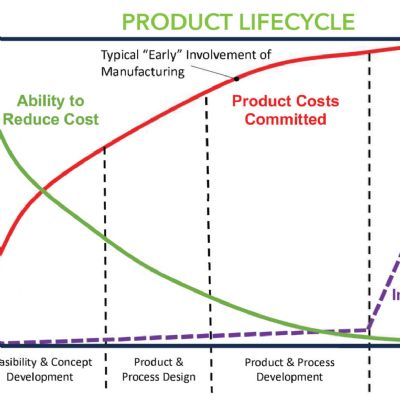 Brad Kuvin
Brad KuvinOne Word Likely to Define 2016: Volatility
February 1, 2016Comments
I’m hearing it repeatedly: Production volumes and order frequencies are wildly fluctuating, as unpredictable as ever. For metalformers, this is pushing flexibility and responsiveness to the forefront. Consider this quote from Buckley Brinkman, executive director and CEO of the Wisconsin Center for Manufacturing and Productivity:
“(Manufacturing production) is more volatile than it’s ever been…Everybody is trying to shorten their supply chains and make them more responsive to the market and to the end consumer.”
As demand seems to change direction as often as the wind, accurate forecasting becomes critical to ensuring that suppliers (metalformers) remain profitable as they “go with the flow.” This means that metalformers, in the midst of a volatile market, need to snuggle up more closely than ever to their customers. They also must strive to expand their knowledge regarding their customers’ customers.
In short, you as Tier suppliers, must study the consumer markets impacting your production schedules, and collaborate with your customers to gauge their needs. Then you must effectively plan to meet their needs, efficiently and profitably.
Some key questions you might ask customers, to help you effectively manage volatility, include asking for the opportunity to help them manage their inventory, and asking if they will accept smaller orders delivered more frequently. While I know that many do not want to carry excessive inventory, and in most cases would prefer to steer clear of short runs that require numerous production-line resets, these scenarios will become more likely in the near term. And, maybe the long term, as customers increasingly are developing products with shorter lifecycles while demanding compressed product-launch cycles.
To get started on optimizing the demand-planning process, concentrate on the top few customers and the products you manufacture for them. How well can you predict when these products will sell and how much will sell? Do you know who buys the end products, and why they buy them?
Getting closer to your customers and moving to complete (as much as possible) collaboration is the trick to optimizing forecast accuracy. A recent article from supply-chain optimization strategists at The Hackett Group says as much, and offers additional advice. For example, metalforming-plant managers would be wise to immerse themselves in understanding key market trends impacting the demand of the products they manufacture. At the very least, select a few of the most important products and become experts in demand-planning for them.
Better forecasts, particularly during volatile times, will minimize the safety stock your company needs to carry—lower average inventory levels and more frequent turns will result.Technologies: Management
Comments
Must be logged in to post a comment. Sign in or Create an Account
There are no comments posted. Management
ManagementDOL Announces Nearly $200 Million Allotted for Registered Ap...
Friday, March 1, 2024
Laurie Harbour, President, Harbour Results, Inc., E707
Wednesday, January 24, 2024
 Podcast
Podcast Management
ManagementMetalForming LIVE 2024: Recruit, Retain, Train Reca...
Monday, January 22, 2024
 Webinar
Webinar  Management
ManagementDesign for Manufacturing
Peter Ulintz Friday, October 27, 2023





